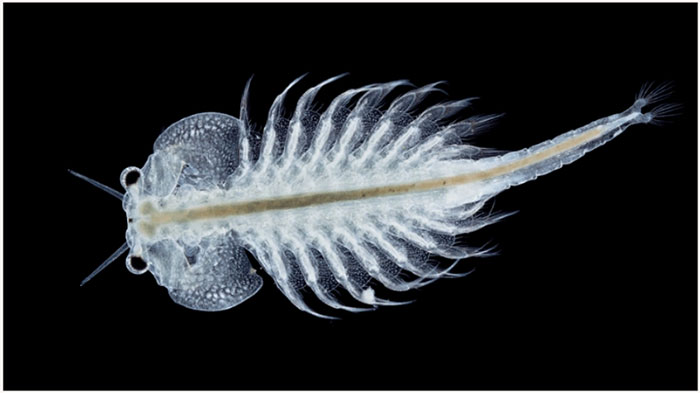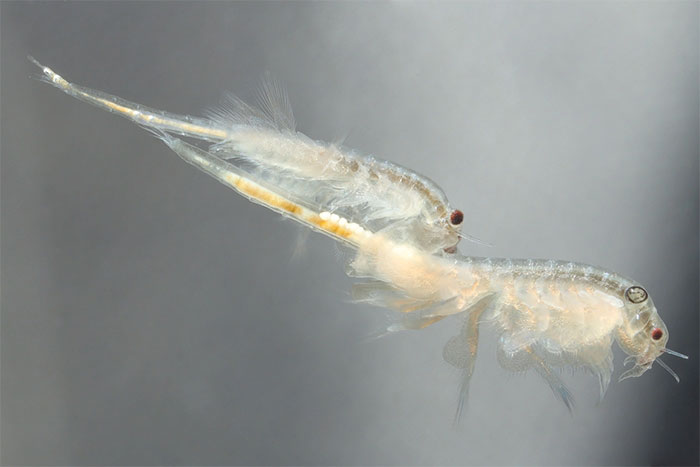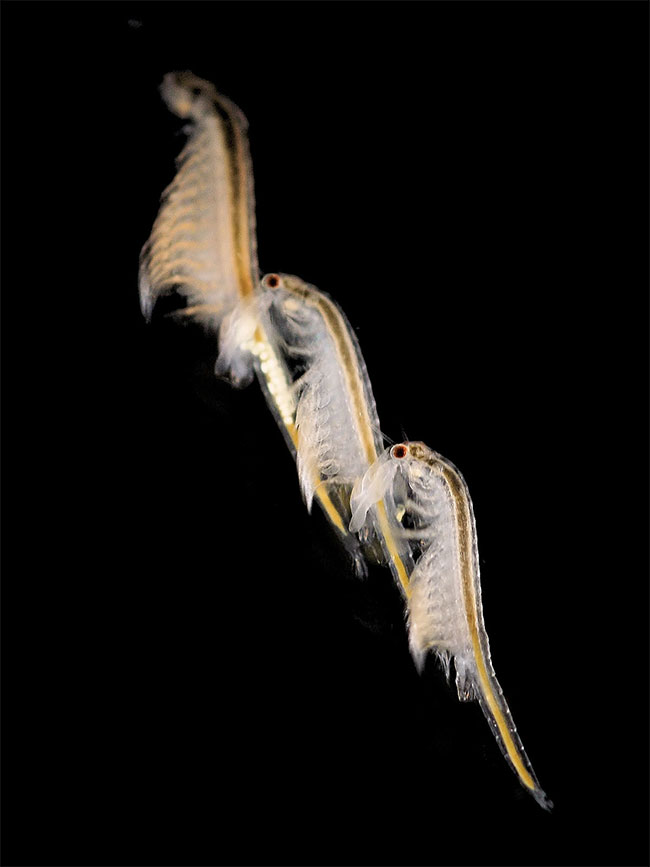Artemia Salina, an ancient type of shrimp that has existed for about 100 million years, can live for up to 10,000 years or even longer.
We think we know everything about our planet; however, there are still unexplored territories. Even more interesting is that our world is composed of 71% water, meaning there are countless things and organisms hiding beneath the ocean’s depths, just waiting to be discovered or perhaps evading our attention.
One such creature that has been recently discovered is called Artemia Salina, an ancient type of shrimp that has existed for about 100 million years. This aquatic crustacean lives near the ocean floor, and although it possesses a simple body structure, it has remarkable survival abilities that allow it to thrive for an extended period.

Artemia salina is a species of brine shrimp – an aquatic crustacean more closely related to Triops and cladocerans than to true shrimp. It belongs to a lineage that has not changed much in 100 million years. A. salina originates from lakes, ponds, and temporary saline waters (not seas) in the Mediterranean region of Southern Europe, Anatolia, and North Africa. Some populations previously classified as this species are now recognized as distinct, including A. franciscana from the Americas. This species has been widely introduced beyond its native range, including in the Mediterranean region, where it has outcompeted the native A. salina. This has occurred in parts of Portugal, Spain, France, Italy, and Morocco.
This species can also be considered one of the most adaptable animals as it can survive in extreme conditions without being affected. You can try to burn it, drown it in chemicals, or even boil it at temperatures above 100 degrees Celsius, and it will still not die. This amazing creature is so adaptable that it can even survive at temperatures as low as -273 degrees Celsius.
Interestingly, females of this species do not require males to reproduce, as they can lay eggs that hatch immediately. However, if conditions are unfavorable, such as extreme temperatures or food shortages, females will produce eggs with hard shells. These eggs contain fully developed larvae that will emerge from the shells when conditions become favorable.
In the early 1990s, some oil searchers near the Great Salt Lake dug and found a series of these hard shells produced by Artemia Salina. When brought to shore, they hatched, but the larvae inside were already mature, according to research by experts.

Females can produce eggs through mating or asexual reproduction. There are two types of eggs: thin-shelled eggs that hatch immediately and thick-shelled eggs that can remain dormant for a long time and will hatch when conditions are favorable. Thick-shelled eggs are produced when the organism is dehydrated, food is scarce, and salinity is high. If the female dies, the eggs will still develop. The hatched eggs will become larvae (nauplii) approximately 0.5 mm long. They have a single simple eye that can only sense the presence and direction of light. Nauplii swim towards the light, while adult individuals swim in the opposite direction.
From further analysis of the shells, scientists found that they were over 10,000 years old, meaning the larvae had fully developed inside, waiting for a more favorable environment to hatch. This indicates that the larvae could survive even longer if undisturbed, possibly up to 100,000 years.
Experts also state that this organism, when inside the hard shell, can withstand extreme dehydration of up to 97%. This is when the organism halts and enters a state of dormancy, similar to how a bear hibernates in winter, but more complex.

In nature, they live in salt lakes. They are rarely found offshore, likely due to a lack of food and their inability to defend themselves. The resilience of these organisms makes them ideal subjects for experiments. Artemia is one of the standard organisms used to test the toxicity of chemicals, including insecticide activity screening – utilized by Blizzard et al. in 1989 to screen hundreds of synthetic avermectins, and by Conder et al. in 1992 for the metabolite of Streptomyces fumanus, dioxapyrrolomycin.
This process is called anhydrobiosis, or more simply, life without water, creating the ability for an organism to survive with almost no water, which is astounding because water is essential for the existence of all life, not just humans but everything around us.


















































